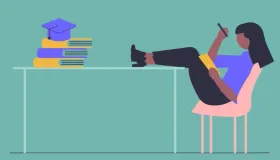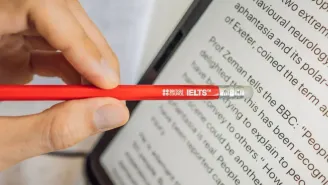Could Urban Engineers Learn From Dance Reading Answers Passage
Could Urban Engineers Learn From Dance Reading Answers Passage
Paragraph A. The way we move around cities has a significant influence on their sustainability. Transportation is projected to account for 30% of energy consumption in most of the world’s most industrialised countries; therefore, reducing the demand for energy-consuming automobiles is critical for reducing mobility’s environmental effect. However, as more people relocate to cities, it is critical to consider alternate forms of sustainable mobility. The modes of transportation we use have an impact on our physical and mental health, our social life, our access to jobs and culture, and the air we breathe. Engineers are entrusted with transforming how we travel around cities through urban design, but the engineering profession continues to work on the assumptions that led to the establishment of the energy-consuming transportation systems we presently have: the emphasis on efficiency, speed, and quantitative data. We need drastic reforms to make city travel healthier, more fun, and less harmful to the environment.
Paragraph B. Some of the solutions may be found in dance. That is not to say that everyone should dance their way to work, no matter how healthy and joyful it makes us; rather, the methodologies used by choreographers to experiment with and create movement in dance might give engineers tools to spark new ideas in city-making. Richard Sennett, a prominent urbanist and sociologist who has revolutionised notions about how cities are built, contends that since the advent of the architectural plan, there has been a split between mind and body in urban architecture.
Paragraph C. Building designs are now conceived and stored in media technologies that insulate the developer from the physical and social realities they’re creating, whereas medieval builders extemporised and acclimated construction through intimate knowledge of accoutrements and particular experience of point conditions. While these new technologies’ design techniques are critical for handling the technological complexity of the contemporary city, they have the disadvantage of simplifying reality in the process.
Paragraph D. Sennett, for example, highlights the Peachtree Center in Atlanta, USA, a development characteristic of the 1970s modernist approach to urban planning. Peachtree designed a grid of streets and skyscrapers to serve as Atlanta’s new pedestrian-friendly downtown. According to Sennett, this failed because its creators placed too much trust in computer-aided design to predict how it would work. They failed to consider that purpose-erected road cafés couldn’t operate in the hot sun without the defensive canopies common in aged structures and would rather bear energy-ferocious air exertion or that its massive car park would feel so unwelcoming that people would be discouraged from getting out of their cars. When what appears to be totally predictable and controllable on screen is transferred into reality, the outcomes are unanticipated.
Paragraph E. The equivalent exists in the field of transportation engineering, where prototypes are used to forecast and transform the ways individuals move around metropolitan areas. Again, these models are vital, but they are based on certain world views that prioritise efficiency and safety over other aspects of city life. In practice, designs that look rational in models appear counter-intuitive to their consumers. Guard rails, for example, will be recognisable to anybody who has attempted to cross a British road. They were an engineering solution to pedestrian safety based on models that prioritise traffic movement. On major roads, they typically direct people to specific crossing points and restrict their progress by separating the crossing into two – one for each highway. As a result, crossings feel longer, imposing psychological obstacles that disproportionately affect the least mobile and pushing others to conduct unsafe crossings to avoid the guard rails. These barriers not only make it more difficult to cross the street; they also divide communities and reduce options for healthy transportation. As a result, many are being removed, generating inconvenience, expense, and waste.
Paragraph F. There could have been a better answer if their designers had been given the ability to think with their bodies, like dancers, and envisage how these boundaries would feel. Engineering will need to gain a greater knowledge of why people move in specific ways and how this mobility affects them in order to bring about substantial changes in the ways we utilise our cities. Choreography may not appear to be an apparent solution to this situation. Nonetheless, it shares with engineering the goal of developing movement patterns under spatial constraints. It is an art form that was created almost completely by experimenting with concepts on the body and receiving immediate feedback on how the outcomes felt. Choreographers have a thorough awareness of the psychological, artistic, and physical ramifications of various movements.
Paragraph G. Cognitive scientist David Kirsh observed choreographer Wayne McGregor and detailed how he “thinks with the body.” Kirsh contends that by utilising the body to model outcomes, McGregor is able to envisage solutions that would not be conceivable with solely abstract reasoning. This type of physical knowledge is appreciated in many areas of expertise but has no place in formal engineering design procedures at the moment. Transport engineers might improvise design concepts and get rapid feedback about how they would function based on their own expertise, or they could model designs at full size in the same manner that choreographers experiment with groups of dancers. Above all, students may learn to design for both emotional and utilitarian benefits.
Could Urban Engineers Learn From Dance Reading Answers with Sample Questions
Have you read the passage? Now, take the test and find Could Urban Engineers Learn From Dance Reading answers! Try to answer these questions by yourself before you sneak a peek at the answers given below.
Check Out Top 15 IELTS Reading Practice Test Questions with Answers
Below are some top free IELTS Reading Practice test online questions with detailed answers to enhance your IELTS preparation online. We have provided sample passages for each test type for your reference.
- What Is Exploration Reading Answers
- Effects Of Noise Reading Answers
- The Discovery Of Baby Mammoth Reading Answers
- The Dead Sea Scrolls Reading Answers
- The Ring-Tailed Lemur Reading Answers
- Why We Need To Protect Polar Bears Reading Answers
- Nutmeg A Valuable Spice Reading Answers
- What Is Meaning Reading Answers
- Cutty Sark Reading Answers
- The Step Pyramid Of Djoser Reading Answers
- South Pole Adventurer Reading Answers
- The Future Of Work Reading Answers
- Ambergris Reading Answers
- Trees In Trouble Reading Answers







